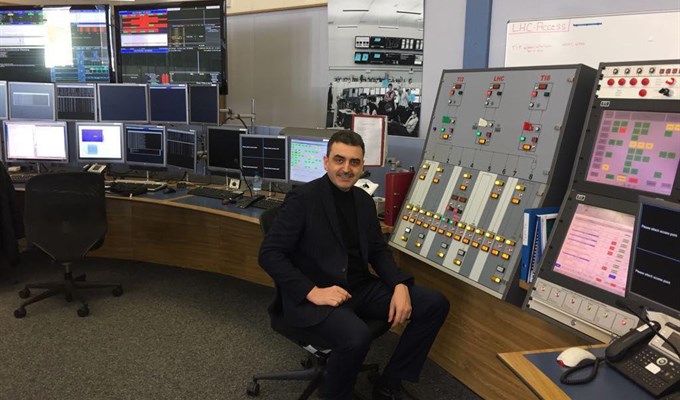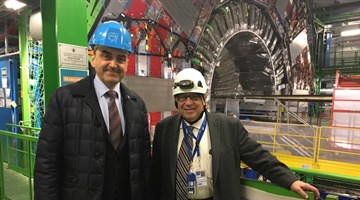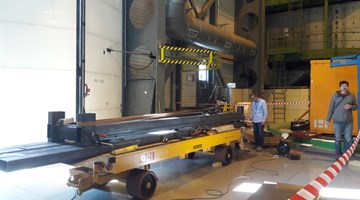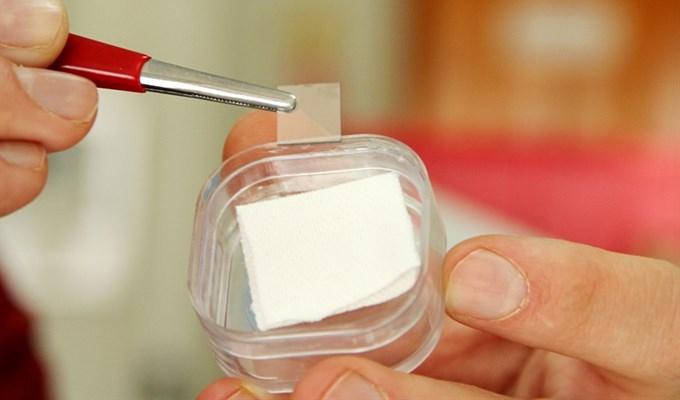TOMSK, Sep 11 – RIA Tomsk. World scientific community celebrated the 10 anniversary from official start of the Large Hadron Collider (LHC) the day before. Thanks to it existence of the Higgs boson which is responsible for the mass of elementary particles was confirmed. How Tomsk developments improve the accuracy of experiments on the collider – in material of RIA Tomsk.
According to media, the Large Hadron Collider was officially started on September 10, 2008. It is constructed on border of Switzerland and France in the tunnel with a length of circle of 27 kilometers. Project cost exceeds 6-8 billion dollars by different estimates. Higgs boson existence was confirmed in July, 2012 on the collider.
Thousands of scientists from around the world, including from Tomsk work on this experimental installation – the biggest in the world.
What the Higgs boson breaks up into
Higgs boson is an elementary particle which was theoretically predicted in 1964, its existence was confirmed thanks to experiments on the LHC in the 2012th. Within the experiment two protons pushed together at a speed close to velocity of light. They broke up into a set of particles among which Higgs boson was being looked for. It, in turn, breaks up into different "sets" of particles with different probability.
After six years of observations scientists of collaborations of ATLAS and CMS have for the first time recorded disintegration of Higgs boson on bottom-quarks (b-quarks). This opening is fundamental confirmation of Standard model of elementary particles and one of the most significant achievements of CERN (European Organization for Nuclear Research which "leads" the LHC) from the moment of discovery of Higgs boson.
Staff of the Laboratory of Experimental High Energy Physics of Tomsk State University (TSU) helped to collect data, which were analyzed subsequently and allowed to record disintegration.
© предоставлено пресс-службой ТГУ
The rector of TSU Eduard Galazhinsky at the LHC control panel
TSU participates in ATLAS experiment on the Large Hadron Collider in CERN since 2015. Physicists of the university under the leadership of Alexander Hodinov investigates processes of disintegrations of Higgs boson on two muons (muon is a heavier analog of an electron. – Ed.). Their task is also modernization of a muonic spectrometer of ATLAS to increase its sensitivity for registration of disintegrations of Higgs boson.
For this purpose scientists develop new detectors equipped with multipurpose chips.
"There are about 6 million transistors in each chip of 20 by 20 millimeters in size, results of all experiment of ATLAS in the next 20 years of work of the Large Hadron Collider will depend on reliable work of each", – the press service of TSU with reference to Hodinov reported earlier.
At the end of 2017 the TSU group received a megagrant of the Government of the Russian Federation on creation of the center of a world class for the analysis of data of the Large Hadron Collider in CERN. Center of the analysis of data of ATLAS experiment will be created at the university until 2020.
© предоставлено пресс-службой ТГУ
Scientists will develop a specialized tool – a so-called cluster for the analysis of data – on the basis of the Cyberia SKIF university supercomputer. Big Data will be processed with use of systems of machine learning and artificial intelligence.
"I see you"
Even the most outstanding experiment won't have value if its result can't be precisely recorded. This problem in CERN (and other largest world synchrotron centers) is solved by the Tomsk detectors on the basis of gallium arsenide which development was begun in TSU in 1993 under the leadership of Oleg Tolbanov.
Gallium arsenide detectors are receivers of synchrotron radiation, which can register single quanta of x-ray radiation. The technology became revolution in the field of experimental physics.
"Synchrotron radiation has quite certain frequency, or energy of quanta. We created material, which is sensitive to single external influences and allows to register single quanta of x-ray radiation. The technology is quite difficult: we introduce one atom of chrome on one million atoms of gallium and arsenic", – Tolbanov told in interview of RIA Tomsk.
Such detectors read out information obtained as a result of experiments, reproduce it in the form of impulses of electric current. Then the special equipment strengthens them, digitizes and reproduces on the computer monitor. Functions of detectors can conditionally be compared to the digital camera – only in other scales and range of energy.
In 2016 the Swiss company Dectris (one of world leaders in production of the equipment for physical experiments) acquired two licenses for production of structures and detectors from gallium arsenide from TSU. It is he first in the history of modern Russia sale case of the technology abroad developed in a university.
Collider upgrade
By 2020 CERN plans modernization of the LHC: increase in luminosity of bunches of protons by 10 times is supposed. Now there is a preparation for this modernization: new technologies are developed, prototypes of the devices capable to work at high radiation loadings are created. Scientists of Tomsk Polytechnic University (TPU) joined one of such projects.
"One of serious problems which exists in the collider is a gradual degradation of bunch of protons. Synchrotron radiation is used for restoration of parameters of the bunch, but this process takes very long time – about 25 hours", – the press service of TPU quoted the head of the Accelerator laboratory on generation and application of electromagnetic radiation of the RASA Center of TPU Pavel Karatayev earlier.
© сайт Томского политехнического университета
TPU scientists together with foreign colleagues suggested to use the diffraction radiation of Vavilov-Cherenkov for restoration of parameters of a bunch (its cooling). In particular – to establish a radiator, which thanks to the Cherenkov mechanism will "take away" a part of energy of a bunch near the collider bunch, thus cooling it.
The radiator will represent a big dielectric (length about 20 meters) having a diamond covering. According to forecasts of polytechnics, such cooling will take about four hours. The working theoretical model is now created, and radiators will be created already on the basis of it which will be tested on several accelerators in the different countries.
Reliable, as Tomsk diamond
Diamond coverings of polytechnics will also be used in the Beam Radiation Instrumentation and Luminosity project (BRIL, collaboration of CMS) on measurement of characteristics of a bunch of elementary particles. In particular, in work on increase in reliability of the system of diamond detectors controlling work of the collider. Diamond detectors fix malfunctions in the course of the experiments and if, for example, the level of luminosity and radiation is exceeded, the system will automatically switch-off accelerators.
However, the diamond detectors installed on the LHC now often behave unpredictable – one quickly fails, another continues to work hard in the same conditions for months. Why – it is not always clear. One of diamond samples was sent to TPU to find out what changes happen in detectors in operating time of the collider.
© предоставлено пресс-службой ТПУ
Diamond sample for the detector of the Large Hadron Collider
Polytechnics drew a conclusion that, perhaps, diamond detectors in CERN behave variously in identical conditions because of metallization (when a thin film of metal is applied on diamond). Scientists of TPU suggested to synthesize diamond layers on a nonconducting body of a detector for the solution of this problem, but already with alloyed (introduced) in them boron. In fact, to grow up other diamond on diamond with an admixture of boron.
The prototype is already installed on the LHC. It will be taken away in 2019, and scientists will estimate its changes. If results of the experiment are positive, it will allow to upgrade and other diamond detectors of CERN in the future.
One more task of polytechnics is to create scientific and technical base that to grow up the advanced diamond detectors steadier against the increased capacities to which CERN plans to pass in the near future.